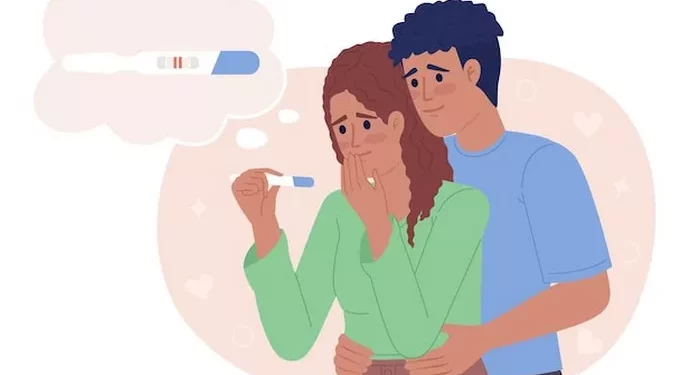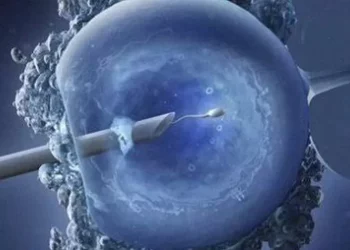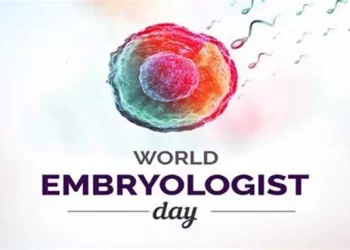Anovulation, the absence of ovulation, is a common cause of infertility in women. Ovulation is the process where a mature egg is released from the ovary, which is essential for natural conception. Without ovulation, there can be no egg to fertilize, leading to difficulties in becoming pregnant. This article explores the various factors that can lead to anovulation, providing a comprehensive understanding of this complex issue.
See Also: Medicine to Help You Ovulate: A Comprehensive Guide
Hormonal Imbalances
Hormonal imbalances are a primary cause of anovulation. The hormones responsible for regulating the menstrual cycle and ovulation include gonadotropin-releasing hormone (GnRH), follicle-stimulating hormone (FSH), luteinizing hormone (LH), estrogen, and progesterone. When the levels of these hormones are not properly balanced, ovulation may not occur.
Polycystic Ovary Syndrome (PCOS): PCOS is one of the most common hormonal disorders affecting women of reproductive age. Women with PCOS often have elevated levels of androgens (male hormones) and insulin resistance, which can disrupt the normal production of FSH and LH. This disruption can prevent the development and release of a mature egg from the ovary.
Hypothalamic Amenorrhea: The hypothalamus is a part of the brain that regulates the release of GnRH. Stress, excessive exercise, or significant weight loss can affect the hypothalamus, leading to a decrease in GnRH production. This reduction can, in turn, lower the levels of FSH and LH, preventing ovulation.
Hyperprolactinemia: Prolactin is a hormone produced by the pituitary gland. Elevated levels of prolactin can inhibit the release of GnRH, which can decrease FSH and LH levels, leading to anovulation. Conditions such as pituitary tumors (prolactinomas) can cause hyperprolactinemia.
Thyroid Disorders: Both hypothyroidism (underactive thyroid) and hyperthyroidism (overactive thyroid) can disrupt the menstrual cycle and ovulation. Thyroid hormones play a role in regulating the metabolism and reproductive hormones, so imbalances can affect ovulation.
Lifestyle Factors
Certain lifestyle factors can significantly impact ovulation. These include:
Stress: Chronic stress can lead to hormonal imbalances that affect the hypothalamus, disrupting the menstrual cycle and leading to anovulation. Stress can cause the body to produce more cortisol, which can interfere with the reproductive hormones.
Weight: Both underweight and overweight women can experience anovulation. Low body weight can lead to a decrease in estrogen production, while obesity can cause insulin resistance and increased androgen levels, both of which can prevent ovulation.
Exercise: While moderate exercise is beneficial, excessive exercise can lead to hypothalamic amenorrhea. Intense physical activity can cause a significant drop in body fat, which is necessary for estrogen production and normal menstrual function.
Medical Conditions
Several medical conditions can lead to anovulation. These include:
Primary Ovarian Insufficiency (POI): Also known as premature ovarian failure, POI occurs when the ovaries stop functioning normally before the age of 40. This condition can be due to genetic factors, autoimmune diseases, or unknown causes. POI leads to low levels of estrogen and high levels of FSH, resulting in anovulation.
Endometriosis: Endometriosis is a condition where tissue similar to the lining of the uterus grows outside the uterus. This can cause inflammation and scarring, which can interfere with the normal function of the ovaries and fallopian tubes, leading to anovulation.
Cushing’s Syndrome: This condition is characterized by high levels of cortisol due to prolonged use of corticosteroid medication or tumors that produce cortisol. High cortisol levels can disrupt the balance of reproductive hormones, preventing ovulation.
Age-Related Factors
Age is a significant factor in ovulation and fertility. As women age, the quantity and quality of their eggs decline. This decline can lead to irregular ovulation and eventually, anovulation.
Decreased Ovarian Reserve: Women are born with a finite number of eggs. As they age, the number of eggs decreases, and the remaining eggs may not be as healthy. This decrease can lead to irregular menstrual cycles and anovulation.
Menopause: Menopause typically occurs between the ages of 45 and 55. During this time, the ovaries stop releasing eggs, leading to the end of menstruation and ovulation.
Genetic Factors
Certain genetic conditions can affect ovulation. These include:
Turner Syndrome: This is a chromosomal disorder where a female is born with only one X chromosome or a partially missing X chromosome. Women with Turner syndrome often have underdeveloped ovaries and may not ovulate regularly.
Fragile X Syndrome: This genetic condition can lead to Fragile X-associated primary ovarian insufficiency (FXPOI), where the ovaries do not function properly, leading to anovulation.
Environmental Factors
Environmental factors can also play a role in anovulation. Exposure to certain chemicals and toxins can disrupt hormonal balance and ovarian function.
Endocrine Disruptors: Chemicals such as bisphenol A (BPA), phthalates, and pesticides can interfere with the endocrine system. These substances can mimic or block hormones, leading to disruptions in the menstrual cycle and ovulation.
Radiation and Chemotherapy: Treatments for cancer, such as radiation and chemotherapy, can damage the ovaries and lead to anovulation. The extent of the damage depends on the type and dose of treatment.
Medications and Medical Treatments
Certain medications and medical treatments can cause anovulation. These include:
Hormonal Contraceptives: Birth control pills, patches, injections, and intrauterine devices (IUDs) that release hormones can prevent ovulation as part of their contraceptive effect.
Antidepressants and Antipsychotics: Some medications used to treat mental health conditions can affect the hypothalamus and pituitary gland, leading to changes in the menstrual cycle and anovulation.
Chemotherapy and Radiation: As mentioned earlier, these treatments can damage the ovaries and lead to anovulation.
Diagnosing Anovulation
Diagnosing anovulation involves several steps and tests. A thorough medical history, physical examination, and laboratory tests are essential in identifying the underlying cause of anovulation.
Medical History and Physical Examination: The doctor will review the patient’s menstrual history, medical conditions, lifestyle factors, and family history. A physical examination can help identify signs of hormonal imbalances, such as hirsutism (excessive hair growth) or galactorrhea (milk discharge from the breasts).
Blood Tests: Blood tests can measure hormone levels, including FSH, LH, prolactin, thyroid hormones, and androgens. These tests can help identify hormonal imbalances that may be causing anovulation.
Ultrasound: A pelvic ultrasound can visualize the ovaries and uterus. It can help identify conditions such as PCOS or ovarian cysts that may be affecting ovulation.
Endometrial Biopsy: In some cases, a biopsy of the endometrium (the lining of the uterus) may be performed to assess the effects of hormonal imbalances on the menstrual cycle.
Basal Body Temperature (BBT) Charting: Tracking basal body temperature over several months can help determine if and when ovulation occurs. A rise in BBT typically indicates ovulation.
Ovulation Predictor Kits (OPKs): These kits detect the surge in LH that precedes ovulation. A lack of a detectable surge may indicate anovulation.
Treating Anovulation
The treatment of anovulation depends on the underlying cause. Addressing the root cause can often restore normal ovulation and improve fertility.
Lifestyle Changes: For women with lifestyle-related anovulation, changes such as stress management, maintaining a healthy weight, and moderate exercise can help restore ovulation. Reducing stress through techniques such as yoga, meditation, or counseling can be beneficial. Achieving a healthy weight through a balanced diet and regular exercise can also improve hormonal balance.
Medications: Several medications can help induce ovulation in women with hormonal imbalances.
- Clomiphene Citrate (Clomid): This medication stimulates the release of FSH and LH, promoting the development and release of a mature egg.
- Letrozole (Femara): Originally used to treat breast cancer, letrozole can also stimulate ovulation by reducing estrogen levels and increasing FSH production.
- Metformin: For women with PCOS and insulin resistance, metformin can improve insulin sensitivity and lower androgen levels, helping to restore ovulation.
- Gonadotropins: Injectable hormones such as FSH and LH can directly stimulate the ovaries to produce and release eggs.
Surgery: In some cases, surgery may be necessary to treat underlying conditions affecting ovulation.
- Laparoscopic Ovarian Drilling: This procedure is used for women with PCOS who do not respond to medication. Small holes are made in the ovaries to reduce androgen levels and promote ovulation.
- Treatment of Endometriosis: Surgical removal of endometrial tissue and adhesions can improve ovarian function and restore ovulation.
Treating Medical Conditions: Addressing underlying medical conditions such as thyroid disorders, hyperprolactinemia, or Cushing’s syndrome can help restore ovulation.
- Thyroid Hormone Replacement: For hypothyroidism, thyroid hormone replacement therapy can normalize thyroid levels, restoring the menstrual cycle and ovulation. For hyperthyroidism, treatments may include medications, radioactive iodine therapy, or surgery to regulate thyroid function.
- Dopamine Agonists: For hyperprolactinemia, medications such as bromocriptine or cabergoline can reduce prolactin levels, allowing normal release of GnRH and restoring ovulation.
- Treatment for Cushing’s Syndrome: Depending on the cause, treatments may include reducing corticosteroid use, surgery to remove tumors, radiation therapy, or medications to lower cortisol levels.
Assisted Reproductive Technologies (ART): For women who do not respond to other treatments, assisted reproductive technologies such as in vitro fertilization (IVF) can be an option.
- In Vitro Fertilization (IVF): IVF involves stimulating the ovaries with gonadotropins to produce multiple eggs, retrieving the eggs, fertilizing them with sperm in a laboratory, and transferring the resulting embryos to the uterus.
- Intrauterine Insemination (IUI): IUI involves placing concentrated sperm directly into the uterus around the time of ovulation to increase the chances of fertilization.
Preventing Anovulation
While not all causes of anovulation can be prevented, certain lifestyle modifications can help maintain regular ovulation and overall reproductive health.
- Maintain a Healthy Weight: Achieving and maintaining a healthy weight through a balanced diet and regular exercise can help regulate hormonal balance and prevent ovulation disorders.
- Manage Stress: Reducing stress through relaxation techniques, regular physical activity, and sufficient sleep can support normal menstrual function and ovulation.
- Moderate Exercise: Engaging in moderate, regular exercise can help maintain a healthy weight and reduce stress without the risk of excessive physical activity that can disrupt ovulation.
- Avoid Exposure to Endocrine Disruptors: Limiting exposure to chemicals that can interfere with the endocrine system, such as BPA and phthalates, can help maintain hormonal balance.
- Regular Medical Check-Ups: Regular visits to a healthcare provider can help detect and manage medical conditions that may affect ovulation. Early diagnosis and treatment can prevent complications that may lead to anovulation.
Conclusion
Anovulation is a common cause of infertility that can be attributed to a variety of factors, including hormonal imbalances, lifestyle choices, medical conditions, genetic factors, and environmental influences. Understanding the underlying causes of anovulation is crucial for effective diagnosis and treatment.
A comprehensive approach to diagnosing anovulation involves evaluating the patient’s medical history, lifestyle, and conducting various tests to identify hormonal imbalances or other underlying conditions. Treatment options range from lifestyle modifications and medications to surgical interventions and assisted reproductive technologies.
Prevention strategies focus on maintaining a healthy weight, managing stress, engaging in moderate exercise, avoiding endocrine disruptors, and regular medical check-ups. By addressing these factors, women can improve their chances of maintaining regular ovulation and achieving their reproductive goals.
In summary, anovulation is a multifaceted issue that requires a personalized approach to diagnosis and treatment. With the right medical guidance and lifestyle adjustments, many women can overcome anovulation and enhance their fertility. It is important for women experiencing difficulties with ovulation to seek professional medical advice to identify the underlying causes and receive appropriate treatment. Through awareness, education, and proactive management, women can take significant steps toward achieving their reproductive health and fertility goals.
Related Links:



























